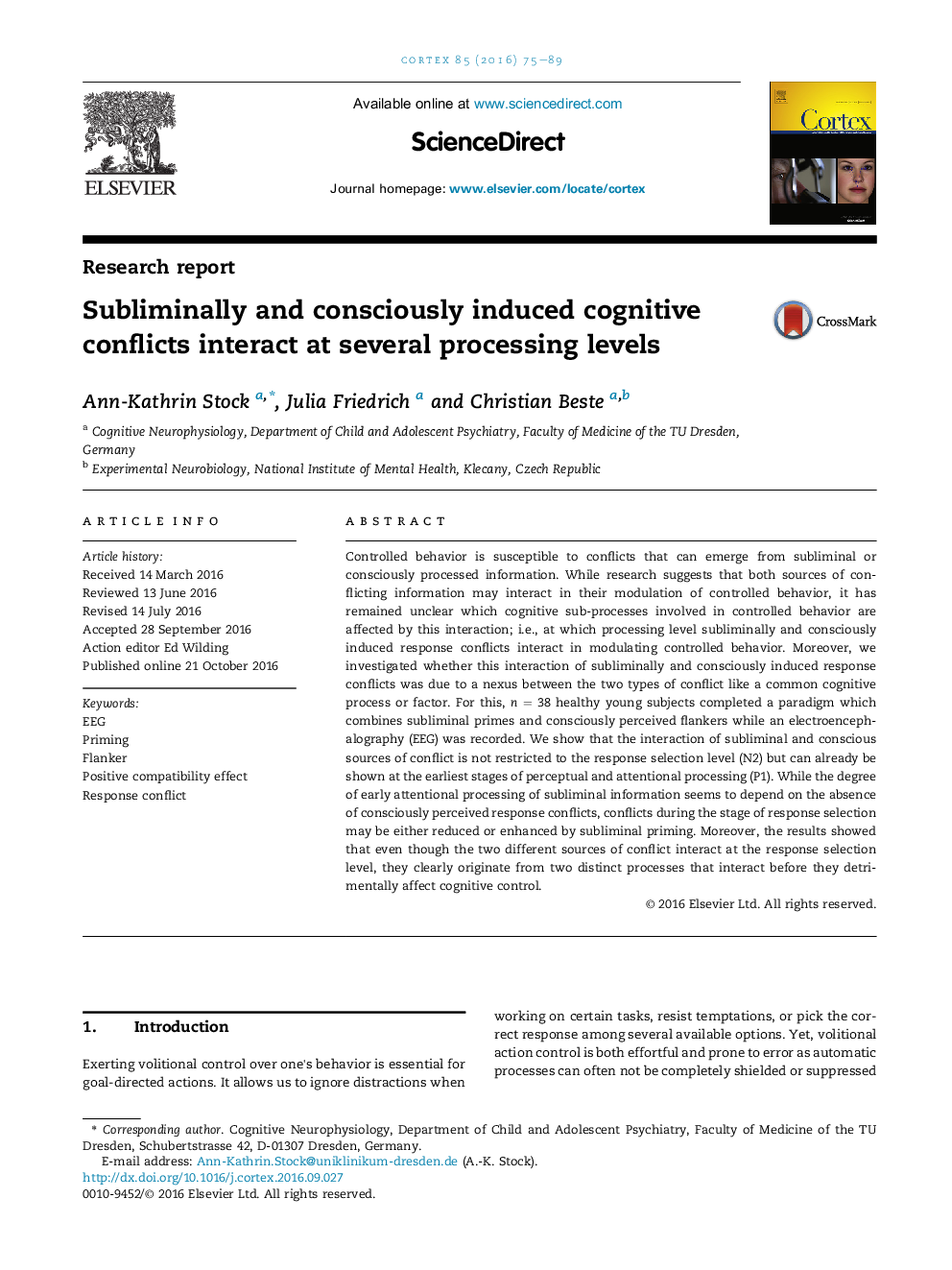| Article ID | Journal | Published Year | Pages | File Type |
|---|---|---|---|---|
| 5044621 | Cortex | 2016 | 15 Pages |
Controlled behavior is susceptible to conflicts that can emerge from subliminal or consciously processed information. While research suggests that both sources of conflicting information may interact in their modulation of controlled behavior, it has remained unclear which cognitive sub-processes involved in controlled behavior are affected by this interaction; i.e., at which processing level subliminally and consciously induced response conflicts interact in modulating controlled behavior. Moreover, we investigated whether this interaction of subliminally and consciously induced response conflicts was due to a nexus between the two types of conflict like a common cognitive process or factor. For this, n = 38 healthy young subjects completed a paradigm which combines subliminal primes and consciously perceived flankers while an electroencephalography (EEG) was recorded. We show that the interaction of subliminal and conscious sources of conflict is not restricted to the response selection level (N2) but can already be shown at the earliest stages of perceptual and attentional processing (P1). While the degree of early attentional processing of subliminal information seems to depend on the absence of consciously perceived response conflicts, conflicts during the stage of response selection may be either reduced or enhanced by subliminal priming. Moreover, the results showed that even though the two different sources of conflict interact at the response selection level, they clearly originate from two distinct processes that interact before they detrimentally affect cognitive control.
